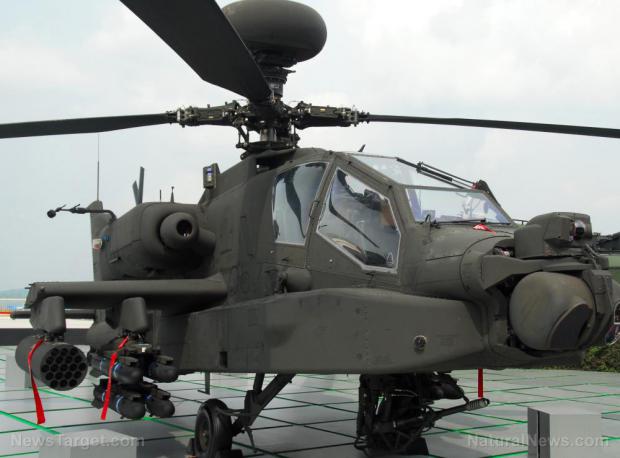
Breaking News
 Green Rush Reloaded: Pot Stocks Soar On Trump Push For Rescheduling
Green Rush Reloaded: Pot Stocks Soar On Trump Push For Rescheduling
 Nuclear Reactors For Investors
Nuclear Reactors For Investors
 Everyone Except Zelensky 'Loved' My Plan, Trump Says, Warning Of WW3
Everyone Except Zelensky 'Loved' My Plan, Trump Says, Warning Of WW3
 Israel Used Palantir Technology In Its 2024 Lebanon Pager Attack, Book Claims
Israel Used Palantir Technology In Its 2024 Lebanon Pager Attack, Book Claims
Top Tech News
 Build a Greenhouse HEATER that Lasts 10-15 DAYS!
Build a Greenhouse HEATER that Lasts 10-15 DAYS!
 Look at the genius idea he came up with using this tank that nobody wanted
Look at the genius idea he came up with using this tank that nobody wanted
 Latest Comet 3I Atlas Anomolies Like the Impossible 600,000 Mile Long Sunward Tail
Latest Comet 3I Atlas Anomolies Like the Impossible 600,000 Mile Long Sunward Tail
 Tesla Just Opened Its Biggest Supercharger Station Ever--And It's Powered By Solar And Batteries
Tesla Just Opened Its Biggest Supercharger Station Ever--And It's Powered By Solar And Batteries
 Your body already knows how to regrow limbs. We just haven't figured out how to turn it on yet.
Your body already knows how to regrow limbs. We just haven't figured out how to turn it on yet.
 We've wiretapped the gut-brain hotline to decode signals driving disease
We've wiretapped the gut-brain hotline to decode signals driving disease
 3D-printable concrete alternative hardens in three days, not four weeks
3D-printable concrete alternative hardens in three days, not four weeks
 Could satellite-beaming planes and airships make SpaceX's Starlink obsolete?
Could satellite-beaming planes and airships make SpaceX's Starlink obsolete?
Scientists have found a way to fabricate replacement parts within hours using only water ...

(Natural News) Scientists have found a way to integrate recyclable plastics with cardboard fibers to create a durable filament for 3D printing. These innovations in 3D printing will allow soldiers to recycle empty water bottles, plastic containers, and cardboard packaging so they can make their own replacement parts on base for use on the battlefield. Soldiers will no longer have to wait weeks for vital replacement parts. They will be able to create the parts they need with the materials they throw away on a daily basis.
Lead researcher Nicole Zander, Ph.D. says that soldiers wouldn't have to depend on outside supply chains for new parts and components. "Instead, they could basically go into the cafeteria, gather discarded water bottles, milk jugs, cardboard boxes and other recyclable items, then use those materials as feedstocks for 3D printers to make tools, parts and other gadgets."
This will improve operational readiness, enhance safety, and make good use of plastics, which end up contaminating landfills and the beautiful oceans of the world. Zander's research was presented at the 256th National Meeting & Exposition of the American Chemical Society (ACS). (Related: Learning from nature: Scientists create new material inspired by leaves to separate oil from water for cleaning up oil spills.)
Recyclable plastics and cardboard successfully converted to 3D printing filament for military use
The research team, including U.S. Marine Corps Captain Anthony Molnar and the U.S. Army Research Laboratory, recognized that PET plastics are just as durable as commercial 3D printing filaments. PET plastics include water and soda bottles. Their first successful experiment involved a two hour process and 10 water bottles. They were able to print a durable vehicle radio bracket.

 First totally synthetic human brain model has been realized
First totally synthetic human brain model has been realized Mach-23 potato gun to shoot satellites into space
Mach-23 potato gun to shoot satellites into space

